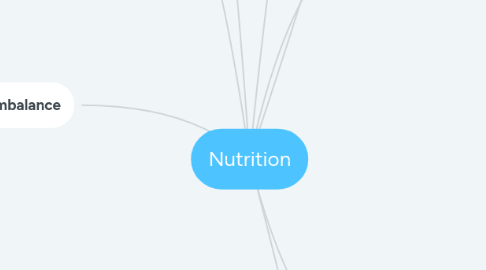
1. Impaired elimination
1.1. Outcome:
1.1.1. Intervention
1.1.1.1. Evaluation:
1.1.1.1.1. A: Patient's output was within a good range in comparison to her input.
1.1.1.1.2. B: Patient developed frequent diarrhea.
1.1.1.1.3. C: Patient had minimal urine output which resulted in a bladder scan and an order for education of self catheterization
1.1.1.2. A: Watched her I/Os
1.1.1.3. B: Patient was given two sennosides
1.1.1.4. C: Patient was given flomax.
1.1.2. A: Patient will have correlating output with her fluids.
1.1.3. B: Patient reports having normal toileting by discharge.
1.1.4. C: Patient will eliminate 200 mL or more urine by 4 hours after the administration of Flomax.
2. Risk for Electrolyte Imbalance
2.1. Outcome:
2.1.1. Intervention
2.1.1.1. Evaluation:
2.1.1.1.1. A: Patients labs remained within normal range for pre-op.
2.1.1.1.2. B: Patient developed diarrhea.
2.1.1.1.3. C: Trends showed that his sodium levels were gradually increasing
2.1.1.2. A: Making sure her TPN and IV fluids are correct and are running appropriately.
2.1.1.3. B: Patient was reporting constipation. We administered a 2 sennosides.
2.1.1.4. C: Monitoring labs. Adding electrolyte replenishment (Gatorade) with every meal
2.1.2. A: Patients labs will be within range before surgery on 11/21.
2.1.3. B: Patient will toilet normally by the end of the shift
2.1.4. C: Patient will maintain sodium levels during hospitalization
3. Risk for dehydration
3.1. Outcome
3.1.1. Intervention:
3.1.1.1. Evaluation:
3.1.1.1.1. A: Patient tolerated constant running fluids and did not show signs of dehydration
3.1.1.1.2. B: Patient consumed all of her fluids provided to her.
3.1.1.1.3. C: With required Gatorade consumption with meals, it decreased his risk.
3.1.1.2. A: Patientt has running fluids
3.1.1.3. B: Carb counting related to type two diabetes with I/O
3.1.1.4. C: Strict I/O
3.1.2. A: Patient will continue to have adequate intake despite being NPO
3.1.3. B: Patient will drink all fluids provided to her by the end of the day
3.1.4. C: Patient will have adequate fluid intake daily.
4. Patient A: She had a mass removed on 10/23. Readmitted with nausea and vomiting related to a newly found gastric obstruction. Now presenting with plural effusion, aspiration pneumonitis, and cholecystitis. Going to have a cholecystectomy on 11/22
5. Patient B: Has a history of mental retardation, not exasperating COPD, schizophrenia, and type two diabetes. Admitted to do a Right wedge resection with a lymphadenectomy due to pulmonary nodules.
6. Imbalanced Nurtrition
6.1. Outcome:
6.1.1. Intervention
6.1.1.1. Evaluation
6.1.1.1.1. A: Patient showed trends of increasing weight.
6.1.1.1.2. B: Patient did not want to seek out the healthier options with my suggestions.
6.1.1.1.3. C: Patient seemed inattentive with the education due to the severity of his headache related to the hemorrhage.
6.1.1.2. A: Administered TPN to maintain nutrition due to NPO status
6.1.1.3. B: I helped the patient order her meal and suggested healthier decisions for her meal to help manage her type two diabetes
6.1.1.4. C: Education on the importance of carb counting and the use of insulin
6.1.2. A: Patient will have balanced electrolyte and increasing weight gain by discharge.
6.1.3. B: Patient will eat a balanced meal during the rest of her hospital stay.
6.1.4. C: Patient will begin to understand an appropriate diet for someone with type 2 diabetes by discharge.
7. Knowledge Deficet
7.1. Outcome:
7.1.1. Intervention:
7.1.1.1. Evaluation:
7.1.1.1.1. A: Patient was able to accept and demonstrated understanding of
7.1.1.1.2. B: Unable to evaluate due to not being present during discharge education
7.1.1.1.3. C: Patients retained urine was within normal limits. Order still remained in effect if next bladder scan showed higher amounts of residual urine.
7.1.1.2. A: Patient educated on reason for NPO due to GI healing
7.1.1.3. B: Patient was cleared for discharge around 1100 after CT removal. Orders were put into start discharge.
7.1.1.4. C: Bladder scanning to check retained urine. Orders for education on straight catheterization when discharged.
7.1.2. A: Patient will understanding the purpose of TPN and being NPO for healing by dishcarge.
7.1.3. B: Patient will understand discharge education before discharfe
7.1.4. C: Patient will understanding the importance of maintaining moderate sodium levels and its effects on the brain, and importance of excreting the appropriate amount of mL/hr of urine by discharge.
